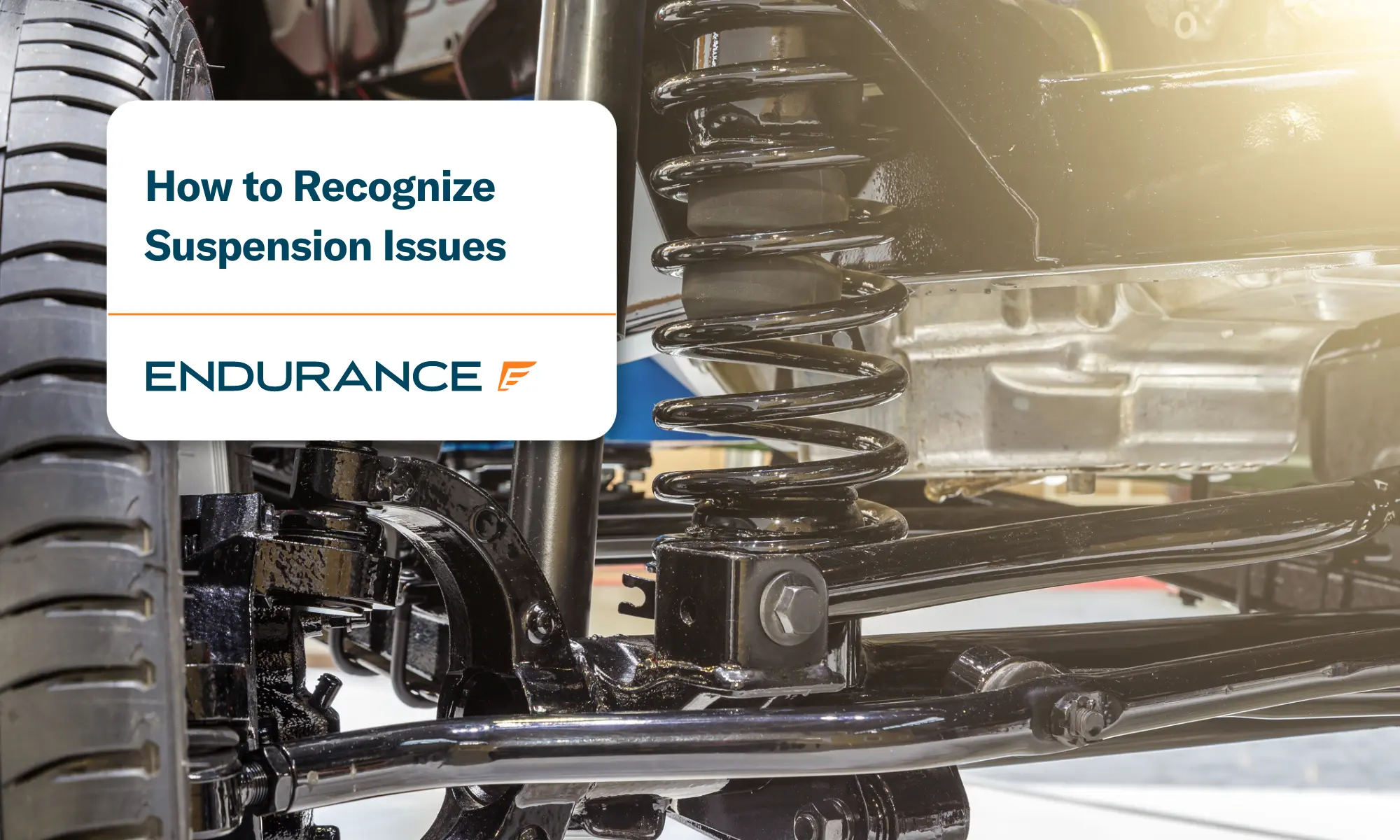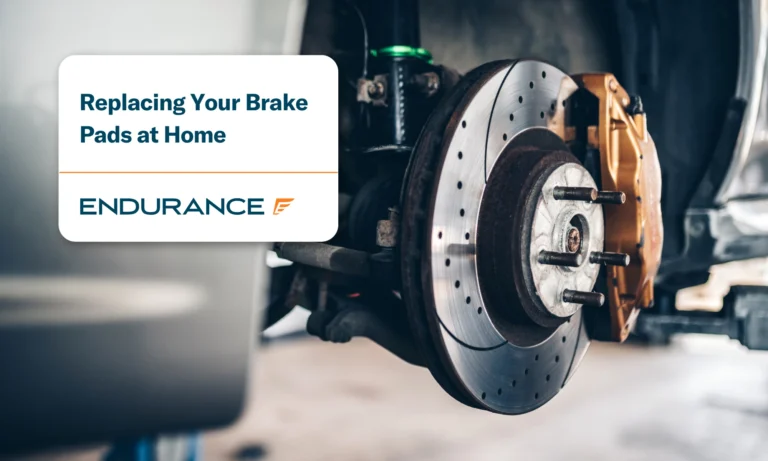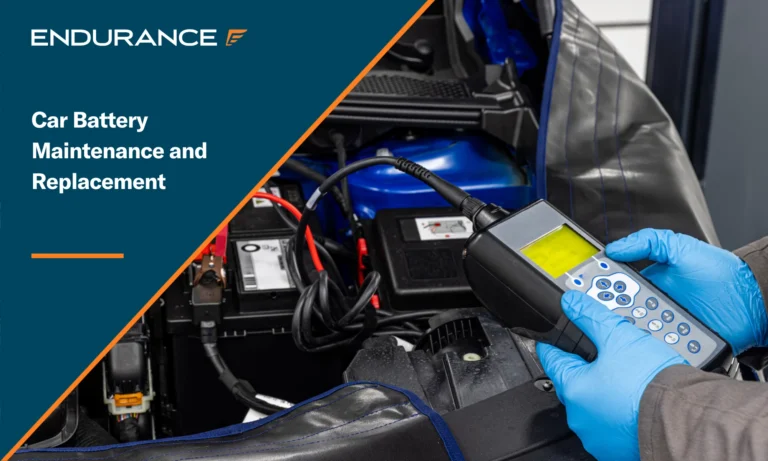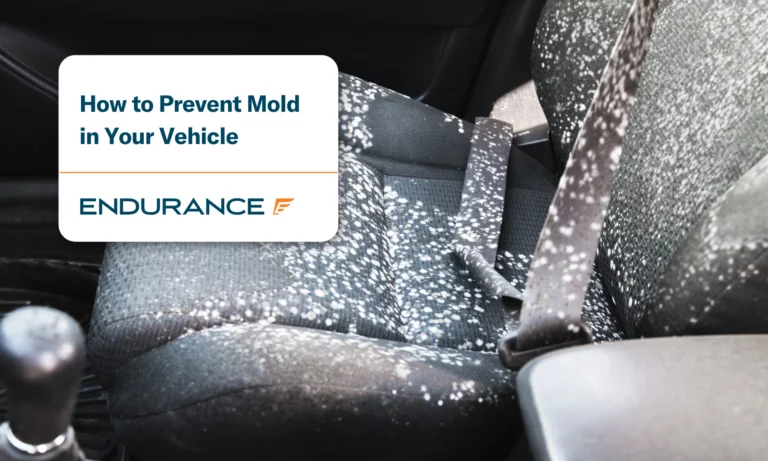Cómo reconocer y reparar problemas del sistema de suspensión

Independientemente del uso que le des a tu coche, cada viaje somete a sus componentes a un gran esfuerzo. Con el tiempo, esto reduce su eficiencia, desgastándolos gradualmente hasta el punto de fallar por completo. Tu sistema de suspensión, en particular, realiza un gran trabajo para... Asegúrese de conducir con comodidad Compensando los baches del camino. También proporciona tracción, ayudando a que las ruedas mantengan el contacto con el suelo.
No hace falta decir que el sistema de suspensión es una parte fundamental de tu vehículo y debe funcionar correctamente en todo momento. Entonces, ¿cómo puedes identificar posibles problemas antes de que empeoren? Veamos algunos problemas comunes del sistema de suspensión y cómo diagnosticarlos, además de consejos para repararlos si quieres intentarlo.
¿Cuáles son los componentes del sistema de suspensión de un automóvil?
El sistema de suspensión de su vehículo está compuesto por una compleja red de componentes. A continuación, un breve resumen de los principales:
- Ballestas: El vínculo entre las ruedas y la carrocería del automóvil, los resortes de suspensión, compensan las superficies irregulares de la carretera para brindar altos niveles de confort de conducción.
- Amortiguadores/puntales: Amortiguadores y puntales trabajan juntos para controlar el movimiento de los resortes y mantener el contacto del neumático con la carretera.
- Brazos de control: Los brazos de control conectan las ruedas al chasis, manteniendo la estabilidad, el manejo y la seguridad al garantizar que el movimiento de las ruedas esté controlado.
- Bujes: Estas pequeñas piezas de caucho o poliuretano se colocan entre los componentes de la suspensión para reducir la fricción y absorber pequeños golpes.
- Rótulas: Ubicadas en la suspensión delantera, las rótulas permiten que las ruedas giren suavemente.
- Barras estabilizadoras: La barra estabilizadora conecta las ruedas izquierda y derecha a través de un resorte de torsión, manteniendo el vehículo más nivelado y estable, mejorando así el manejo y la comodidad de conducción.
Problemas comunes de suspensión
Hay varios problemas comunes del sistema de suspensión que puedes encontrar mientras conduces, incluidos:
1. Su vehículo se desvía hacia un lado.
Si su vehículo se desvía hacia un lado mientras conduce, podría haber un problema con los neumáticos. frenos, o sistema de suspensión. En cuanto a su sistema de suspensión, si alguno de sus componentes está dañado o funciona mal (por ejemplo, los puntales, los cojinetes, las juntas o los resortes), puede afectar la alineación de las ruedas de su vehículo y provocar esto. También podría observar un desgaste irregular de los neumáticos si el problema persiste durante un tiempo.
2. Rebotar excesivamente en baches y desniveles.
El sistema de suspensión está diseñado para absorber el impacto de los baches y las irregularidades del camino para que disfrutes de una conducción suave. Por lo tanto, si tu vehículo empieza a rebotar excesivamente o el recorrido es irregular, probablemente haya una falla. Puntales dañados o los resortes helicoidales son los culpables más probables porque si están desgastados y no pueden amortiguar esos impactos como está previsto, su automóvil podría comenzar a sentirse como un trampolín.
3. Un lado o una esquina de su vehículo se siente más bajo.
La suspensión garantiza una conducción suave y ayuda a sujetar el vehículo. Los componentes de la suspensión dañados, como un amortiguador reventado o resortes débiles, pueden provocar que el auto se hunda en una esquina o incluso en todo un lateral. El hundimiento puede ser tan grave que se puede apreciar con solo mirar el vehículo.
4. Inclinación al frenar.
Cuando usted pisar el frenoEl impulso hacia adelante, combinado con el peso del vehículo, envía mucha fuerza a la parte delantera. Sin embargo, si la suspensión no funciona correctamente, no podrá compensar esto, por lo que la parte delantera se verá empujada hacia abajo en picado. También podría sentir un balanceo al detenerse por completo, a medida que el peso comienza a equilibrarse.
5. La dirección se vuelve difícil.
Tu volante Los sistemas de suspensión están directamente relacionados, por lo que si algo falla con la suspensión, lo más probable es que lo notes en la dirección. Por ejemplo, la dirección podría ser más difícil de usar o podrías sentir que el vehículo se desvía hacia un lado.
6. Su vehículo se inclina hacia un lado al tomar una curva.
Así como tu vehículo puede inclinarse al frenar, también podría desviarse al tomar una curva. Esto funciona de forma similar, ya que el giro repentino desplaza el peso del coche, dándole la sensación de que se desplaza en esa dirección.
4 formas de diagnosticar problemas de suspensión
Si sospecha que puede estar experimentando un problema con su suspensión, hay algunas formas en que puede intentar diagnosticarlo usted mismo:
- Una inspección visual: Empieza con lo que puedes ver. Revisa todo y comprueba si hay... señales de daño, fugas o desgaste en las piezas de la suspensión.
- La prueba de rebote: Presione cada esquina del vehículo una por una y suéltela. Si rebota demasiado al volver a su posición, tiene un problema.
- La prueba de carretera: Saca el vehículo a dar una vuelta. ¿Tienes problemas de manejo al conducir? ¿Oyes algún chirrido o rechinamiento inusual? Si algo no te parece bien, podría ser la suspensión.
- Una inspección de neumáticos: Los problemas de suspensión suelen causar un desgaste desigual de los neumáticos. Revise la banda de rodadura para detectar cualquier anomalía.
Reparación y mantenimiento de la suspensión
Reparar el sistema de suspensión generalmente no es la tarea más complicada, por lo que hay algunas cosas que puede intentar usted mismo si desea evitarlo. visitando un taller de automóviles:
Reemplazo de amortiguadores y puntales
Para reemplazar los amortiguadores, primero afloje los pernos de las ruedas traseras. A continuación, aplique el freno de estacionamiento, calce las ruedas delanteras, levante la parte trasera del vehículo y apóyelo sobre caballetes. Retire la rueda y luego los pernos de montaje superior e inferior del amortiguador. Retire el amortiguador, coloque uno nuevo y reemplace los pernos con el par de apriete requerido.
Reemplazo de resorte
Primero, asegúrese de que el resorte de repuesto tenga la clasificación correcta. Siempre es mejor reemplazar ambos resortes (delantero o trasero) a la vez para que tengan la misma clasificación. Al igual que al reparar los amortiguadores, levante el vehículo con cuidado y retire la rueda. A continuación, retire el conjunto y el puntal de la cubierta. Retire el resorte viejo, coloque el nuevo y vuelva a ensamblar todo.
Reemplazo del brazo de control y buje
Generalmente es mejor dejar este trabajo en manos de un mecánico certificado, ya que puede llevar mucho tiempo y podría dañar el sistema de suspensión si no se realiza correctamente. También requiere herramientas específicas que probablemente no tengas en el garaje. Tendrás que desmontar el brazo de control, retirar el buje viejo y reemplazarlo por uno nuevo, pero todo esto es mucho más fácil con una prensa hidráulica a mano.
Reemplazo de rótula
Las rótulas pueden ser muy difíciles de acceder e instalar, especialmente con el tiempo y el óxido. Es mejor dejar este trabajo en manos de un profesional, pero para una visión general del proceso, se empieza por desmontar la rueda y luego retirar las pinzas de freno, el rotor y, posiblemente, también las bieletas de la barra estabilizadora. A continuación, inspeccione cuidadosamente y retire cualquier anillo elástico que pueda estar sujetando la rótula en su lugar. A continuación, utilice una prensa para rótulas para retirar la rótula vieja del brazo de control e instalar una nueva.
Reemplazo del enlace de la barra estabilizadora
Después de levantar el vehículo con seguridad, retire la rueda y use la nueva bieleta de la barra estabilizadora para identificar la anterior. Rocíe los sujetadores de ambos extremos de la bieleta con líquido penetrante y déjelos reposar durante cinco minutos. Sujete la bieleta o la rótula con unas tenazas de banco para evitar que gire y, luego, use una carraca para comenzar a aflojar la tuerca de un extremo. Repita el proceso en el otro extremo y retire la bieleta. Ahora puede reemplazarla por una nueva, pero asegúrese de que esté bien apretada antes de volver a conducir.
Garantías extendidas: proteja su sistema de suspensión
El coste anual de poseer un automóvil no hace más que aumentar y recientemente ha superado los 12.000 T/T. según AAACon el sistema de suspensión sometido a una gran presión cada vez que conduce, es una de las áreas de su vehículo con mayor probabilidad de sufrir fallas inesperadas, y el costo de las reparaciones puede ser elevado. Para protegerse (y proteger sus bolsillos) de esta carga financiera, los conductores de todo Estados Unidos... invertir en una garantía de automóvil extendida¿Pero cuál es el adecuado para usted?
Su primera opción es una garantía extendida tradicional, que generalmente se adquiere en su concesionario o, a veces, directamente del fabricante. Esta extiende eficazmente la cobertura de la garantía de fábrica de su vehículo (también conocida como garantía del fabricante) más allá de su fecha de vencimiento, brindándole la misma tranquilidad por más tiempo.
Aunque suena genial en teoría, este tipo de cobertura tiene algunas desventajas importantes. Por ejemplo, el costo de compra suele ser tan alto que es poco probable que aproveches la inversión. Las reparaciones solo se pueden realizar en un concesionario autorizado, lo cual no es ideal si sufres una avería a cientos de kilómetros de uno. Lo peor de todo es que necesitarás una garantía de fábrica activa para calificar, lo que descarta casi por completo a los propietarios de autos usados.
Como resultado, una contrato de servicio de vehiculo de un proveedor externo, como Garantía EnduranceEs la alternativa más popular. Para empezar, los proveedores externos ofrecen una cobertura casi igual de completa a un precio aún mejor, y suelen incluir beneficios adicionales para endulzar la oferta. Las reparaciones se pueden realizar en cualquier taller certificado de su elección. Lo mejor de todo es que puede adquirir este tipo de cobertura independientemente del estado de su garantía de fábrica. Siempre que cumpla con los criterios de elegibilidad del proveedor elegido, estará listo.
Vale la pena señalar que un contrato de garantía extendida/servicio del vehículo y Seguro de auto Son dos cosas muy distintas. En concreto, una garantía extendida o contrato de servicio vehicular está diseñado para protegerte de las facturas de reparación derivadas de una falla inesperada de un componente. Por otro lado, el seguro de auto te protege de las facturas de reparación derivadas de una colisión, condiciones climáticas extremas u otros incidentes similares. Combinar ambos te protege de todas las maneras posibles, por lo que es muy recomendable invertir en ambos si es posible.
Elija Endurance para una conducción totalmente segura
No importa el buen mantenimiento que le dé a su vehículo, ningún componente dura para siempre. Cuando ocurre la inevitable avería, casi puede garantizar que ocurrirá en el peor momento posible, dejándolo varado lejos de casa y con una costosa factura de reparación. Para conducir con total confianza, necesita... Una garantía de automóvil extendida que cuida de usted, y Endurance es el proveedor más confiable de Estados Unidos.
Endurance ofrece una elegibilidad inigualable, con una amplia gama de planes diseñados para una gama aún más amplia de conductores. Ya sea que viaje ocasionalmente al trabajo, conduzca un vehículo compartido, tenga un auto con alto kilometraje o tenga la suerte de conducir un vehículo de lujo, lo tenemos cubierto. También puede personalizar un plan para que se ajuste a sus necesidades y presupuesto.
Además de la mejor cobertura del país, también ofrecemos los mejores beneficios adicionales. Cada plan Endurance incluye Asistencia en carretera 24 horas al día, 7 días a la semana (incluidos servicios de remolque, entrega de combustible y apertura de puertas), reembolso del vehículo de alquiler y costos de interrupción de viaje de serie. Por si fuera poco, todos los nuevos clientes de Endurance pueden acceder a un año gratuito de nuestro Paquete de beneficios Élite, que incluye cobertura de neumáticos, reemplazo de llavero, hasta $500 en descuentos por colisión y hasta $1,000 en protección contra pérdida total.*
Llame a un asesor del plan Endurance al (800) 253-8203 a Solicite una cotización GRATIS, o tienda en linea Para ver tu precio ahora. O, si quieres leer más antes de irte, visita nuestra Blog de garantía extendida para otros artículos útiles sobre todo lo relacionado con el sector automovilístico.













Desde los 16 años, Keith ha estado inmerso en la industria automotriz, comenzando su carrera ayudando a su padre a reparar vehículos a una edad temprana. Keith ahora es dueño de su propio taller de reparación familiar certificado por ASE. A+ Cuidado del automóvilEn su tienda, se centra en construir relaciones de confianza con su comunidad a través de un servicio al cliente excepcional. Leer más Acerca de Keith.